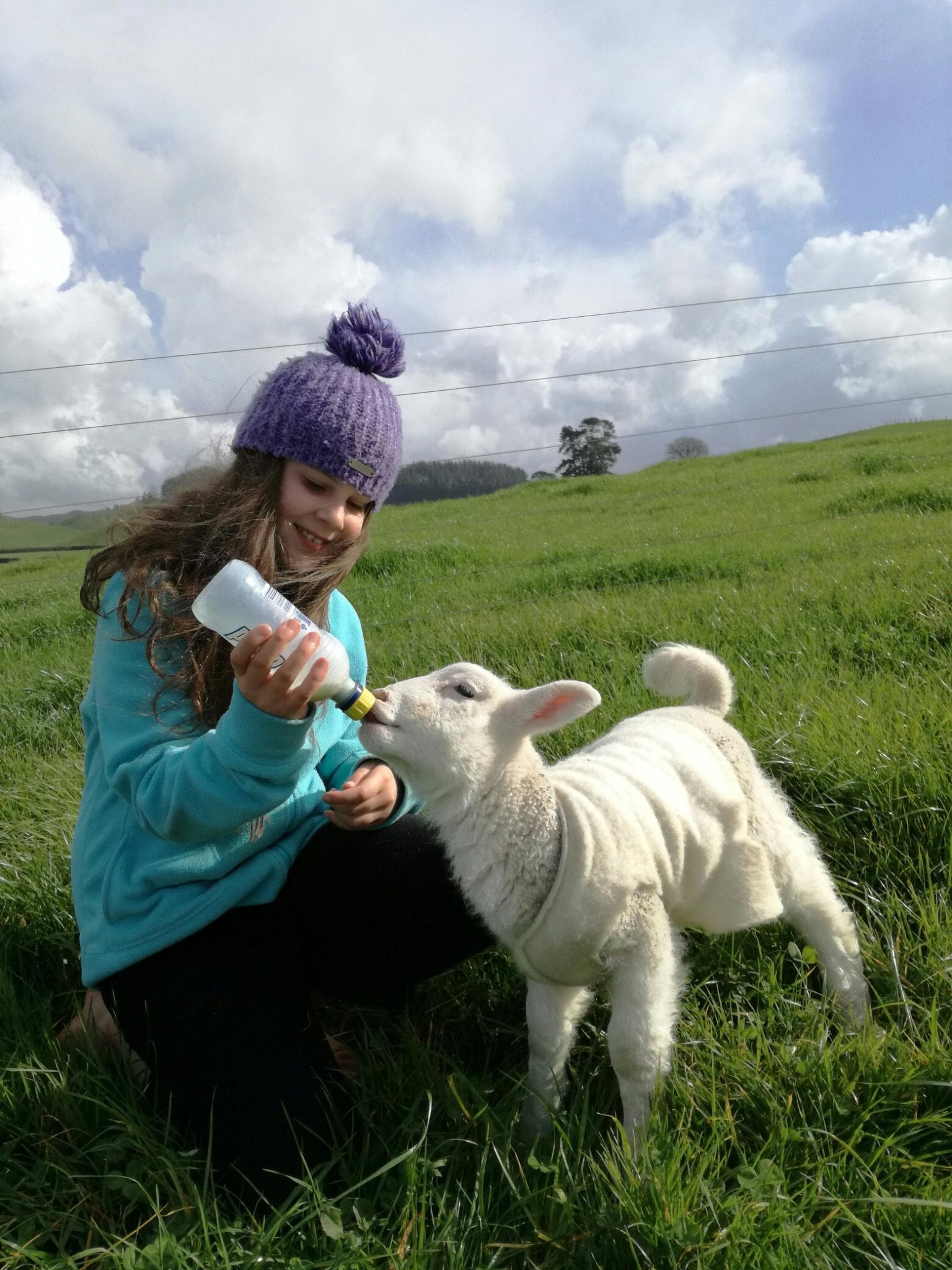Feeding Pet/Fostered Lambs
Day 1:
The lamb requires 5-6 feeds of high quality colostrum spaced evenly throughout the day. Colostrum is absolutely critical for the lamb to establish an active immune system and to provide antibodies that will help the lamb to fight infection and prevent scours. The aim is to feed about 125ml per feed for a 4kg lamb.
Day 2-4:
Big robust lambs that have adapted well to the bottle can have the number of feeds reduced to 3-4/day but the volume increased. Aim to feed 200-300mls per feed. Do not be tempted to overfeed! It is best to keep the lambs a little hungry especially in the first few days. Overfeeding can lead to scours or bloating.
Day 5 onwards:
Transition lambs onto cold, yoghurtised milk. The most common cause of pet lamb deaths is abomasal bloat. THIS IS REALLY COMMON! A bacteria called Sarcinia lives in the abomasum and helps to digest the lactose in milk. When Sarcinia starts to proliferate it produces a large volume of gas, which if not removed quickly by the lamb, can result in abomasal bloat and death of the lamb. Rearing lambs on cold yoghurtised milk will virtually eliminate this issue.
To Make Yoghurtised Milk
- Place 3L of warm water (40C) in a 9L bucket (ensure the bucket is twice the volume to your milk or you may have a mess to clean up)
- Add 1 kg of Anlamb powder and mix with a stick blender
- Add a 200ml Easiyo Satchet to the water and mix again
- Leave in the hot water cupboard to thicken (8-12hrs)
The mix varies from a bubbly thickshake to crusty cream cheese sitting on top of a clear liquid, to thick commercial yoghurt - Top up with cold water to the 8L mark on the bucket
- Remove 200ml of this liquid for use as the started for the next batch
- When it’s time to feed the lamb, whisk the mix well and decant what you need and feed cold
- Introduce the yoghurt with a gradual transition from warm to cold feeding
- You can change the bucket every so often for a clean one if you prefer
- You may need to occasionally ‘recharge’ the mixture with extra yoghurt if it gets too thin or seems to not be fermenting well.
Lamb Scours
The vast majority of scours in lambs is nutritional/osmotic rather than infectious and are generally easily fixed:
- At the first sign of a mild scour with the lamb still bright and drinking
- Increase the concentration of the milk replacer being fed by around 20-25%
- Cut the water down but use the same amount of powder
- Also reduce the volume fed for two or three feeds by 50ml
- This will frequently stop the scour, but make sure the lamb has fresh water available and watch for constipation, this can happen quite easily.When the scour stops, transition back to normal volume and concentration.
- If the above approach doesn’t work or the lamb is dull or inappetant, you will need to move onto the electrolyte therapy.
- Please talk to your vet. When the milk is reintroduced, use the reduced volume/increased concentration approach as above.

